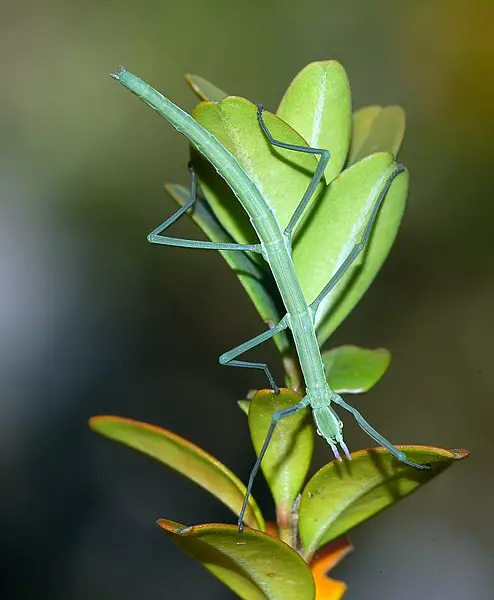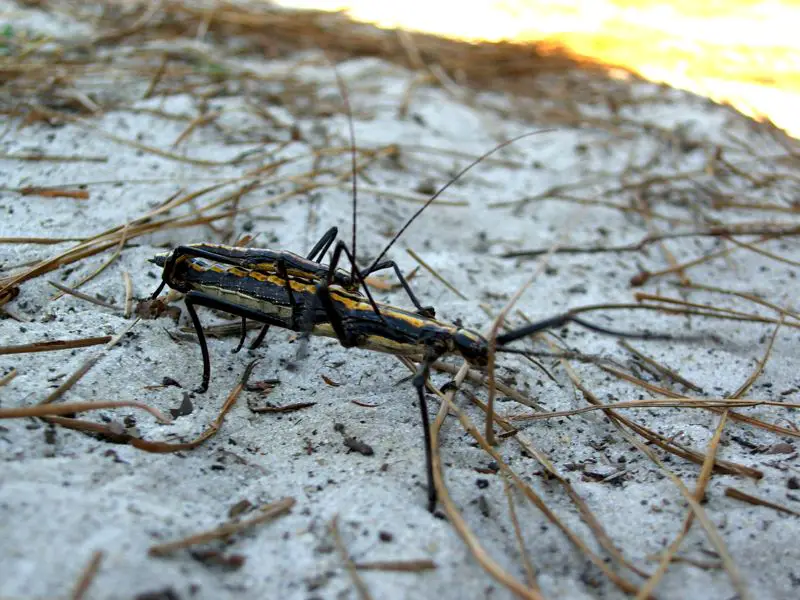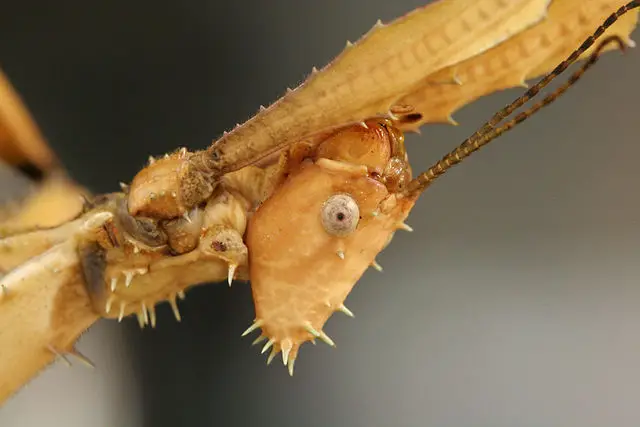The stick bug is sometimes called the walking stick.
Stick bugs can be found in forests all over the world. They are related to grasshoppers and praying mantises. They are usually brown, green, or black depending on their habitat. Some are about a foot long and some only an inch long.

Not all walking sticks look alike. Some are round and slender like a twig; others are flat and look like bark or even resemble a leaf. Some species have 2 sets of wings and some are wingless. If they have wings, the thorax is long and the front set of wings is narrow and hard and the hind set is broad with many veins.
Stick bugs have a head with eyes, two long, slender antennae and a chewing mandible; six legs, a thorax, and an abdomen. Sometimes the antennae are longer than the entire body. They have sticky pads on the toes and non-sticky pads on the heels of their feet. This gives them extra grip to be excellent tree climbers.
The stages of development are egg, nymph, and adult. As a nymph the insect will feed and climb bushes and trees during the day. They will shed their skin many times while going through the nymph stage.
Also, during each molt, the facets of the eyes and the number of photo-receptor cells in the eyes will increase. When it is an adult, its sight is 10 times more powerful than a nymph’s and it is very sensitive to sunlight. This is probably why it becomes a nocturnal eater as an adult.
The female does not have to mate with a male. She will lay 100 or more eggs and deposit them into hollows of the tree or drop them to the forest floor. Each egg will become another female stick. If a female manages to find a mate, the eggs she produces will be male and female.

The eggs look like brown seeds. Each seed has a little bump called a capitula. Ants carry the seeds to their ant hills and eat the capitula but leave the egg undisturbed. This way the eggs are protected during the winter and will hatch in spring and escape.
Walking sticks use camouflage as a defence as they spend most of their lives in trees and are herbivorous (they eat leaves and stems). Another defence is the ability to regenerate a leg; if a predator grabs one of its legs, the leg detaches and the lost leg is re-grown.
As yet another defence, some walking sticks have a terrible smelling fluid which they can spray if disturbed and make the predator temporarily blind. They can also play dead for hours!
Walking sticks are food for other animals, such as birds, bats, reptiles, spiders, and small rodents. Some animals can eat the insects themselves and some prefer eat their droppings.

Questions:
- The stick bug is related to what other insect?
- Why are the nymphs of stick bugs daylight eaters and the adults nocturnal?
- Does the female walking stick have to breed with a male?
- Name three methods the walking stick uses as defence.
- How do ants protect the stick bugs eggs?
Answers:
- The stick bug is related to the grasshopper.
- The adult stick bug has eyes that are very sensitive to daylight.
- No, the female walking stick can produce eggs that will mature without breeding with a male.
- The walking stick uses camouflage, they can regenerate a leg, and they can spray a foul fluid to dispel a predator.
- Ants find the eggs on the ground and carry them to their ant hill. There they eat the capitula and leave the egg undisturbed and it stays there protected until spring.